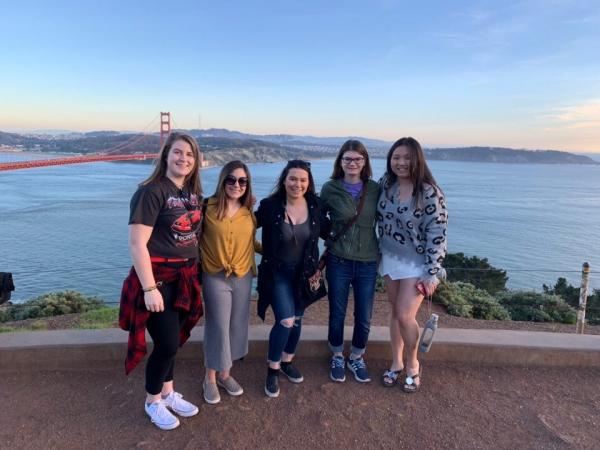Pier 39, Chinatown & Golden Gate Bridge, Oh my!

This week during spring break, students in Farm, Food, and Environmental Policy (ACE 292) are traveling to Northern California to learn about California’s unique agriculture systems, visit a variety of farms, and meet influential people in the agriculture industry. This educational opportunity gives students a new perspective on agriculture by comparing the policies, operations, and overall perceptions of California and Midwest agriculture. As a class, we are excited for the week ahead as we explore the area and learn more about the breadth and complexities of California agriculture!
On Saturday afternoon, we arrived in San Francisco. The past two days have been spent exploring the city, eating delicious food, and enjoying the free time before our agriculture tour starts on Monday. One stop Katelyn and Laine enjoyed, was a boat tour off Pier 39. A hotspot for tourism, Pier 39 has many restaurants and shops to explore. The most famous attraction located here are sea lions. Roughly 150 to 600 sea lions can be seen barking and sunbathing on docks off Pier 39. The boat tour took us on the Pacific Ocean to go under the Golden Gate Bridge and close to Alcatraz Island.

Many of us made the trek up to Battery Spencer to get “the picture” with the Golden Gate Bridge. Completed in 1937, the Golden Gate Bridge is an iconic landmark in San Francisco stretching a mile over the Golden Gate strait. The views of the bridge from Battery Spencer were breathtaking!
San Francisco is home to one of the oldest Chinatowns in the United States. Besides Asia, Chinatown in San Francisco is the largest Chinese community. It covers 24 square blocks and was established in 1848. While visiting, beautiful lanterns lit up the streets and the smells of delicious Chinese cuisine filled the air!

Throughout the rest of the week, we will travel across California to meet with food, farm, and environmental leaders. Students will be able to draw comparisons between the issues Midwesterners and Californians face every day regarding agriculture. At the completion of the trip, students will have a better understanding of California agriculture and the impact it has on a national and global scale.